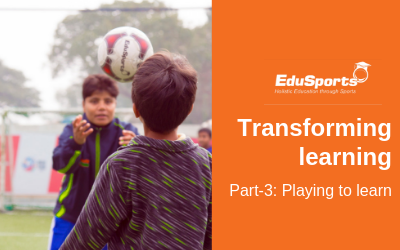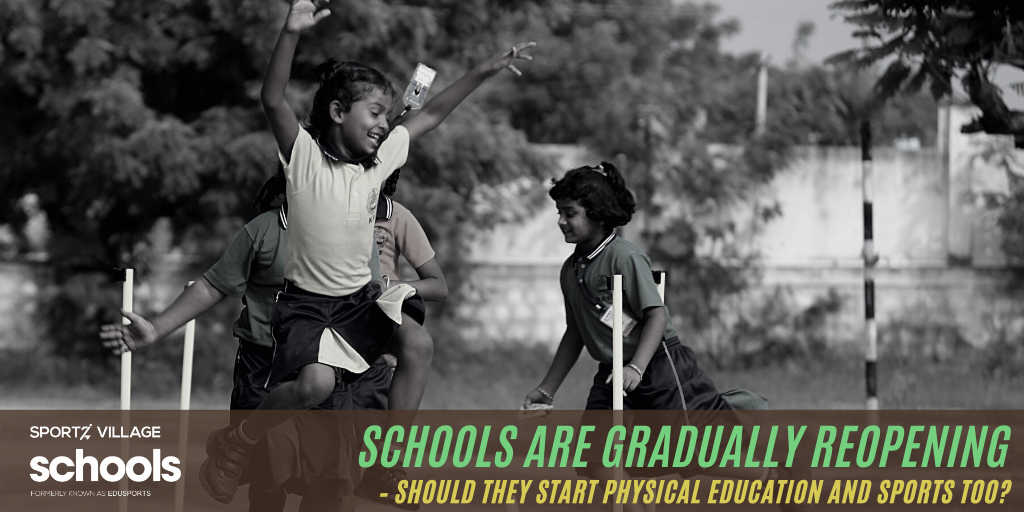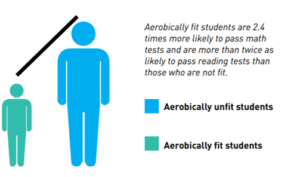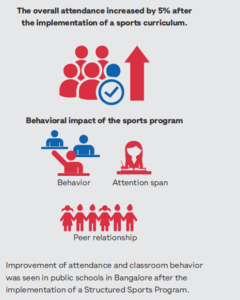“To succeed is to have failed” – learning from failures
Category: Uncategorized

“To succeed is to have failed” – learning from failures
John McEnroe was the # 1 tennis player from 1980 to 1984 – and one of the finest shot-making players in tennis the world has ever seen. But the world also remembers him as abusive, arrogant and entitled from his behavior on the court. Apparently, he did not know how to lose – and blamed everyone else around him whenever he lost. Contrast him with another tennis champion of recent times – Roger Federer – and the differences can’t be starker. For Federer, losing or making mistakes is not a sign of weakness, but a blessing, because they help him hone what he needs to work on to improve – and be his best. Moral of the story: One might still succeed in a vocation purely because of natural ability or talent, but this success is always pre-determined, and one should be careful that the pursuit of success at any cost does not leave behind a negative atmosphere in its wake.
Learning to lose or fail is one of the most critical attributes required for being successful in any sphere of life. Carol Dweck, a famous psychologist talks about the ‘growth mindset’ – which allows us to learn from our failures and improve our abilities – in contrast to a ‘fixed mindset’, where we shirk failures and think that our abilities are carved in stone – or can’t be improved. For instance,
“I am not good at kicking the ball.” – is a good example of a fixed mindset, and
“I am not good at kicking the ball, yet.” – captures the growth mindset well.
A fixed mindset, as it assumes a fixed ability or aptitude, does not know how to deal with or learn from failures – and greatly limits the growth of an individual.
In one of the studies conducted by Dweck and her team, they found that children who displayed a ‘growth mindset’ displayed higher levels of achievement in school (and outside) in areas where success could be measured, regardless of their initial aptitude. They also found that children from poorer households, who displayed a growth mindset, on an average performed as better, as children from high income households who had access to a far better quality of education. In India, this insight holds huge promise in how we approach education (public or private) for hundreds of millions of children who come from low income group households – and may not have access to high quality education.
So how does one learn to develop a growth mindset – or an ability to learn from failures? Our decade long experiments in using sport in schools have shown us that sport could be a powerful tool to teach critical life-skills including the ability to deal with failures. Sport can mimic life (on playgrounds) – and if used appropriately in learning environments such as schools – can help shape right experiences and behaviors of children. Most importantly, the cost of failures extracted on playgrounds is very small compared to costs of failures in real life – so children can be taught to fail often and learn from their mistakes on the playgrounds.
While sport can be a great vehicle for teaching the growth mindset to children, it is not complete without informed adult (parental or teacher) guidance. Caring adults can recognize the right opportunities to get the child to focus squarely on the process or the effort (the notion of practice or training in sport), and not on the outcomes (such as winning or losing). The adult could also make the child realize the importance of ‘deliberate practice’ – where by applying herself to any task or vocation (and learning continually from mistakes), she can increase her aptitude and abilities significantly in that task.
In the words of an ancient philosopher, “to succeed is to have failed, and to fail is to have succeeded.” This philosopher certainly knew how failures always predicate success, but success by itself means nothing – besides being a positive outcome of an event!

Sports and experiential learning
A huge part of our childrens’ time is spent in being educated. This consists of classes at school as well as course work done at home. But is learning actually happening?
Survey after survey, every passing year, say that the learning levels in most of our schools aren’t at the level that they should be. Is there something that we are missing out on, something that we are not doing right? How do we solve this problem?
One solution could be ‘Experiential learning’
Have you ever heard of anyone learning to swim or playing the guitar by only reading a book? It would be simply impossible. If we accept that it is impossible for children to learn any sport or art form with only theory, then why don’t we extend this logic to academic subjects as well? This is where “Experiential learning” comes in.
I would like to define experiential learning as nothing other than “learning by doing”.
Experiential learning has been touted by educational experts around the world to be one of the best tools that is available for educators. Experiential Learning has shown to accelerate the learning process in children as well as adults. Whenever experiential learning is used to communicate or teach an idea, students tend to learn faster, understand ideas comprehensively and also tend to remember whatever they have learnt for longer.
Why does this happen?
The most obvious reason is the complete concentration and focus that is demanded from the individual while doing any activity. You simply cannot, not focus on the task at hand. And even if you do, you will soon fail at the activity. The feedback is immediate. You immediately know what you are doing wrong, and what you will need to do to get things right.
This is in stark contrast to a normal classroom session where children, can and do tend to lose attention to the class at hand. There is no immediate feedback or penalty for not paying attention. You will only realise the cost of this during examinations or tests, and by then it usually is too late.
Another benefit of experiential learning is that it tends to inculcate a behaviour of self-teaching, an extremely useful habit to have in a world where most of the human knowledge is available at our fingertips through the internet. There is no barrier for a person who has the motivation and intent to learn.
A clear example of the benefits of experiential learning can be seen in sports, especially when young athletes are coached to improve in their respective sports. Let us take an example of a football coach teaching how to head a football. He first describes how to do this verbally. He would mention that, to head the ball effectively one should always keep his or her eye on the ball; one must always connect the ball with your forehead and such. He then proceeds to demonstrate how this is done correctly. This is analogous to the introduction of an idea in a class in academic subjects. The athletes on observing the coach now try and replicate the activity. They know immediately if they are doing things in a right or a wrong manner. With constant and immediate feedback from the coach, they would know what they need to change in their technique to get things right. Complete focus is absolutely necessary to execute the technique accurately. And finally after the practice the coach has a discussion with the students on how they performed in the activity and where they went wrong and what they need to do to improve. Also, there is an emphasis on self-improvement and practicing to learn on one’s own. This initial necessity of practicing inculcates a habit of self-learning.
Although there are numerous benefits to experiential learning, on its own, it will not result in learning levels improving. Experiential learning should always be coupled with conventional or traditional teaching methods.
Experiential learning tends to work best when the idea is first communicated in an academic session, followed by the “Practical” session and then rounded off by a session reflecting on the activity conducted.
One significant challenge of experiential learning (as with any other teaching method) is that it is completely dependent upon intent of the child to learn. The emotional state of a child can either turbocharge or act as a hindrance for the learning process.
Emotional Priming for Education
We all know from our own experience that ’emotions’ is the essential criteria – on which we base most of our ‘rational’ decision making in our lives.
Development experts have long argued that we process all information through the filter of ’emotions’ before the ‘logical response’. In a series of telling experiments, scientists demonstrated that when you dissociate the ’emotion’ and ‘body’ from the process of cognition, rational behaviour and learning is absent.
This means that if our children do not have an ‘emotional commitment’ to ‘learning, they are unlikely to learn very much. This, in my view, is by far the single biggest problem our schools are facing today: how do you get the ’emotional commitment’ from the children required for any learning?
Sports as an enabler for education
What exactly do we mean by play? Let us address this first before moving on to how this helps us in education today.
Imagine a rock-climber inching his way up a huge, ominous looking rock completely absorbed in the intense effort to climb, or a runner drawing upon her every ounce of energy to finish the race, or a bunch of kids playing tag in a public park completely oblivious of the honking traffic or any other external noise. What is common in all these scenarios? All of them are deeply engaged in a game or sport they have chosen out of their own free will, an activity, ostensibly with no material gain, which is only worth doing for its own sake.
George Mallory, a fabled mountaineer who died while attempting to scale Mt. Everest almost two decades before Edmund Hillary and Tenzing Norgay officially accomplished the feat, was once asked: ‘Why do you want to climb Everest?’, he’s supposed to have replied ‘because it is there.’
Sport or play at its most fundamental level has a unique attribute. The players participate mostly for the sake of fun or enjoyment, without any notion of material gains or productivity. In fact, sometimes, it might seem like a sheer waste of time and energy.
So, what has this got to do with schools and learning? A lot!
Most schools prioritise academics over sports as the consensus is that performance in these fields determines career success. Hence, It should not come as a surprise why schools are also key agents of promoting inactivity, evident by the ever-reducing recess times and the number of sports periods in school timetables, for the simple reason that ‘playing’ for its own sake, does not seem very productive or outcome oriented.
Schools do promote sports and physical activity, but mainly in the form of organized or competitive sport, which offers but a small subset of ‘talented’ children an opportunity to win something material, a medal or a trophy, something to show for the investment that is put in terms of time and effort. Now, identifying and developing sporting talent from schools is an important and critical pursuit by itself, but this does not result in all children playing sports and does not contribute towards experiential learning.
And in most school sports programs, what tends to happen is that children are left on their own to play. This results in either them not engaging in any meaningful way, and consequently a lot of children get left out. What is required is an activity or a curriculum that is structured and ensures that every child is included and every child is meaningfully engaged.
How does sport engender a positive sentiment or feeling towards learning?
Imagine a bunch of kids playing a game of ‘seven stones’. The game requires them to take a series of rapid decisions at every point, right from how they should throw the ball, to which place should they dash to if the ball hits the stones, and the manner in which they should come together to fix the stones and so on.
At the end of the session, let’s assume a teacher walks up to these children and calls out the fact that she noticed them taking some highly intelligent decisions while they were playing and goes on to discuss the merits of some of these decisions to some detail.
The adult’s intervention helps reinforce the link between the act of play and their innate ability to reason, leaving a residue of positive emotion for the children.
The session also helps the children in developing an intuitive sense around their body’s ability to move in multiple ways. The act of playing sports includes the cerebral processes of reasoning and problem solving, getting actualized at once in the mind through movement and getting stored in our minds as ‘learning’ or ‘experience’. By playing of their own volition, children are activating parts of their brain that is responsible for cognition and motor competence.
Do you think that there is a higher chance that these children playing would have a stronger emotional commitment for a downstream math or science class? There’s huge amount of data & evidence around the globe and from our work with children in schools for the past decade that supports this assertion.
We have consistently seen increased attendance levels, improved class engagement in government schools where we have introduced our program. Academic performances have also significantly improved whenever children are consistently involved in physical activity.
Why does this happen? How does sport prime children emotionally to learn?
Play is a natural impulse in all children which fuels an anticipation of ‘pleasure’, a necessary condition for any learning to happen. During play children are able to operate in an ‘alternate reality’ or a ‘make-believe’ land. Any ‘feelings’ that are felt during play, although felt in an alternate reality, not only will become part of their psyche or consciousness but will soon pervade beyond the game into ‘real life’. Deep ties bind thought, emotion and movement – a fact illuminated whenever someone steps out to play. We can also change our children’s ‘reality’ by changing their attention and feelings towards it.
There is also scientific evidence of the benefits of sport beyond the basic health and fitness benefits and which extends into the basic structure of the brain.
“Intelligence in humans, measured in the form of IQ, depends more on the body than we realize. Learning and thought – including aspects of cognition and creativity – are not just the process of the head, but of the whole body.”
“Learning involves building of skills, and skills of every manner are built only through movement of muscles but also the intellectual skills used in classrooms and workplaces. It is evident that movement or physical activity – realizes or anchors the thought in the body – and this anchoring is stored in our mind as experience – or what we call as learning.”
(Hannaford, Smart Moves)
The fact is that play or movement enables learning via the entire sensory-motor system and if used judiciously and generously in our education process can accelerate the learning levels of children exponentially. As educators and parents, it is necessary that we let our learning environments be ‘invaded’ with generous sessions of play, movement and games – both structured and unstructured.
In conclusion, to improve current learning levels in schools there needs to be a combination of traditional teaching methods to introduce ideas; experiential learning sessions to cement these ideas in children’s’ minds through practical sessions; and finally, tools to ensure they are ‘emotionally’ ready to learn. And one of the best tools that we can use to ensure that children are emotionally primed to learn is sport.
Transforming learning: Part -3
 Author
Parminder Gill
(Co-founder and Head of Business)
Author
Parminder Gill
(Co-founder and Head of Business) 
Transforming learning: Part-2
Power of Play
(This article is the 2nd in a series on using play to transform learning for children)
I spent part of my childhood in the deserts of Rajasthan. Kite flying is a popular sport in that part of the country – and as kids – the most thrilling part of this sport was to chase kites that were cut loose after duels – catch and bring them back as trophies. While chasing these kites, we would sometimes run for long distances – as the strong desert wind would keep them flying longer. To be able to get to the kite first, the trick was to run fast, with one eye constantly on the kite – and keep discovering the shortest possible route to the line of kite’s flight – which typically included overcoming natural hurdles such as sand dunes, ditches, broken walls of abandoned houses, all manners of nullahs and so on. Most of the times, our attempts to lasso the kites were unsuccessful – but the chase was always worth it.
When I look back at these episodes, as thrilling as they were, they also forced us to take a series of quick decisions to overcome unforeseen obstacles along the way. We would use the best of our cognitive abilities – to problem solve, reason, and discriminate – develop an intuitive sense around our body’s ability to jump, climb, roll, crawl over or around whatever came in the way.
So here’s a question for you: ‘Do you think chasing kites in a desert or any such activity can be qualified as learning for our children? I am not referring here to the feel-good, stress-relieving, life-skills sort of a learning we commonly associate sport or physical activity to – but the learning our schools aim to deliver in their classrooms – which is the core cognitive ability or competence of children.
Before we answer this, let’s take a quick look at what’s happening in our schools currently:
As parents, all of us want our children to succeed in school – chiefly because the success in school is hugely correlated to their material success later in life. And the sure-fire way to succeed in school is to do well primarily in areas of numeracy and language – in other words developing their cognitive ability – measured by metrics such as IQ (Intelligence Quotient).
It does not come as a surprise that the Administrators of schools – both Public or Private – invest in all manners of systems & tools mainly to increase the cognitive competence of children -viz, the learning levels in mathematics, sciences and languages. The investments also include allocation of a very generous share (almost all) of the school timetable for these subjects.
Fundamentally, there is nothing wrong in this approach. But the problem is that survey after survey, every passing year – continues to say that the learning levels in our schools (both public and private) remain below par. At the very least, it merits an evaluation of the current interventions adopted by the state and private bodies to improve learning levels of kids in schools.
The solution is not to replace existing interventions and programs, but overlay (or complement) it with other non-traditional learning tools such as movement or play – which have been long been regarded by Psychologists and Scientists across the globe – as central to the healthy development of children.
Recent Brain research (Hannaford, Smart Moves), conducted by scientists in different parts of the world, conclusively shows that:
1.”Intelligence in humans, measured in form of IQ, depends more on the body than we realize. Learning and thought – including aspects of cognition and creativity – are not just the process of the head but of the whole body.”
2.”Learning involves building of skills, and skills of every manner are built only through movement of muscles – not just the physical skills of athletes, dancers and artists – but also the intellectual skills used in classrooms and work places. It is evident that movement or physical activity – realizes or anchors the thought in the body – and this anchoring is stored in our mind as experience – or what we call as learning.”
Let’s validate this research with the story I started this article with. Could it not be that the seemingly innocuous act of ‘kite chasing’ is actually helping expand the cognitive ability of kids? The act includes the cerebral processes of reasoning and problem solving – getting actualized at once in the mind through movement – and getting stored in our minds as ‘learning’ or ‘experience’.
The fact is that play or movement enables learning via the entire sensory-motor system – and if used judiciously and generously in our education process – can accelerate the learning levels of children exponentially. Our own work and research with kids in the past decade also points in the same direction.
Let’s quickly summarize what we have established (including borrowing the ‘conditions of play‘ from my last article) – and the way forward:
1.Play is a natural impulse in all children (and adults) – which fuels an automatic context of anticipation of ‘pleasure’ – a necessary condition for any learning to happen.
2.Play helps transport kids to an ‘alternate reality’ – a land of ‘make-believe’ (for instance – we used to imagine ourselves to be the ‘Pirates of the Desert’ – in the kite chasing act narrated earlier) – which is essential to assimilate the unintegrated pieces of ‘information’ into their minds as experiences and learnings.
As educators and parents, it is necessary that we let our learning environments be ‘invaded’ with generous sessions of play, movement and games – both structured (to improve the basic motor competence of children) – and unstructured (to let the children use their unconstrained imaginations and co-create ‘play-things’ with their mates for the game at hand) – to significantly increase the capacities of their brains.
One word of caution again, some of us confuse play with organized sports – where adults are in-charge and competition is the goal (an important pursuit but not the focus here). Please refer to ‘attributes of play’ in my previous article for understanding ‘what is play’.
Just to close off the kite chasing story I started this article with – after chasing kites for hours out in the hot sun, when we would return home in the evening – and hear the dreaded voice of our mom – ‘have you found the time to finally study now?’ What fun it would’ve been, if we had been able to just turn around and say, ‘Mom’, ‘what do you think I was doing for the past few hours?’

Author
Parminder Gill
(Co-founder and Head of Business)

Transforming learning: Part-1
What is play?
Imagine a rock-climber inching her way up a huge, ominous looking rock – completely absorbed in the intense effort to climb, or a runner drawing upon her every ounce of energy to finish the last few laps, or a bunch of kids playing tag in a public park – completely oblivious of the honking traffic or any other external noise.
What is common in all these scenarios? Of course, it is evident that they all are deeply engaged in a game or sport they have chosen out of their own free will- an activity, ostensibly with no material gain, which is worth doing for its own sake.
George Mallory, a fabled mountaineer who died while attempting to scale Mt. Everest almost two decades before Edmund Hillary and Tenzing Norgay officially accomplished the feat, was once asked: ‘Why do you want to climb the Everest?’, he’s supposed to have replied – ‘because it is there.’
Sport or play at its most fundamental level has a unique attribute – the players participate mostly for the sake of playing, without any notion of material gains or productivity. In fact, sometimes, it might seem like a sheer waste of time and energy.
So, what has this got to do with schools and learning? A lot.
It should also not come as a surprise why the schools – our primary learning environments – are also key agents of promoting inactivity (evident by the ever-reducing recess time and number of sports periods in school time-tables) – for the simple reason that ‘playing’ for its own sake, does not seem very productive or outcome oriented.
Now, don’t get me wrong. Schools do promote sports and physical activity – but mainly in the form of organized or competitive varieties of sport – which offers but a small subset of ‘talented’ children an opportunity to win something material (a medal, or trophy), something to show for the investment put in terms of time and effort. Now, identifying and developing sporting talent from schools or grass-root sports is an important and critical pursuit by itself – but not the focus of this piece (which is learning).
The fact is that play is central to human experience – right from the time we are babies. We are intrinsically wired to play.
In this series of articles on ‘transforming learning’, I would like to offer some arguments – how play, in and of itself – can have a huge impact on learning.
For starters, let’s take a quick look at the ‘psychology’ behind play viz. what is play, and why do we play?
Play is characterized by the following two attributes:
- Play is something that is done completely out of one’s own will or volition – which differentiates it from what we call ‘work’ or ‘study.’
- Play comes with its own set of ‘rules’ and an ‘arena’ (independent place earmarked for playing) – created by or agreed between the players. This construct also enables the participants to operate in an ‘alternate reality’ or a ‘make-believe’ land – which is fundamentally different from what we call ‘real life.’
And, why do we play? There are many theories offered by leading psychologists and scholars as to why we play?
Given below are two key ideas that agree with our experience as well:
- The ongoing sense of control and accomplishment – one gets while playing – is immensely liberating and pleasurable
- Play or sport gives an individual the opportunity to connect or bond with others and the environment – to be a part of a social context is often deeply satisfying.
Having established that, let’s do a quick thought experiment. Consider the reference of ‘kids playing tag in the public park’ at the beginning of the article. Does ‘game of tag’ satisfy all four conditions of ‘play’ outlined above?
Now, let’s test if the converse is true as well. Think of a sub-par ‘play’ or ‘sports’ session in a school or outside. Can you spot if any one or more conditions from the above missing?
The question now arises that how can we use these attributes of ‘play’ to improve educational outcomes in schools? This will be the focus of my upcoming articles – so stay tuned!

Author
Parminder Gill
(Co-founder and Head of Business)

Schools are Gradually Reopening – Should they start Physical Education and Sports too?
The year 2021 has started on a positive note with schools in several states of India re-opening, in a staggered manner. However, it is of utmost importance that school leaders give sports and physical education the same priority as academics, especially in the current scenario.
Along with several physical and mental health benefits, sports and nutrition are the two elements that can boost a child’s immunity. World Health Organization1 recommends a minimum of 60 minutes of reasonably rigorous playtime every day for a growing child to be healthier and fitter. Moreover, according to a 2019 study in the US2, children who were not involved in exercising were twice as likely to have mental health problems such as anxiety and depression compared to their counterparts.
In addition to reducing anxiety and depression among children, sports or play also helps with stress reduction, improvement in confidence and higher self-esteem. The reason being, any physical activity or sports help produce endorphins within the body that leads one to feel happy and positive. Additionally, by instilling the values of sportsmanship, discipline, and leadership, play or sport also becomes instrumental in the social-emotional development of children.
Sports or physical education not only contribute to a child’s health, immunity, and fitness but also to his/her academic performance. Physical education or sports is an important part of modern education. There are several studies that prove a direct and positive correlation between sports and academic performance.
For instance, “According to research done by Budde et.al3, aerobically fit students are 2.4 times more likely to pass math tests and more than twice as likely to pass reading tests than those who are not fit. Also, 20-40 minutes of brisk walking is said to improve mathematical performance in children.”

Moreover, studies have also shown that participation in sports on a weekly basis is associated with higher GPAs in English and Mathematics4.
Sports can also be used as a tool to meaningfully engage with children and improve their attention span, attendance, and peer relationships. Additionally, studies have also shown that structured physical activity can improve a child’s classroom behavior by approximately 20%5.

According to the Institute of Youth Sports 20096, most children enjoyed going to school after the inclusion of sports in their timetable.
Sports or play helps build the 21st century skills in children. Play also helps develop the 3Cs of learning in children- Critical thinking, Collaboration and Creativity. Various concepts of science and math such as speed, velocity, gravity, and kinetic energy etc. can be taught to children with the help of sports. In fact, the National Education Policy 2020 also acknowledged the power of play as it included sports and physical activity as an integral part of the education of a child. Play can be an instrumental tool to develop formative assessments that focuses on the 360-degree development of a child.”
In conclusion, integrating play or sports in the core academic curriculum will help educators better understand the thought process and the learning process of a child, thereby leading to his/her holistic development.

Krish Iyengar,
Business Head, Sportz Village Schools
References:
- https://www.who.int/dietphysicalactivity/physical-activity-recommendations-5-17years.pdf
Movement and mental health: Behavioral correlates of anxiety and depression among children of 6–17 years old in the U.S – https://www.nytimes.com/2020/03/02/well/family/the-benefits-of-exercise-for-childrens-mental-health.html# :~:text=Zhu%20was%20the%20first%20author, who%20met%20the%20exercise%20guidelines.
https://www.sciencedirect.com/science/article/abs/pii/S1755296619300067
- Budde, H, Voelcker – Rehage, C, Pietrayk– Kendiziorra, S. Ribeiro, P. Tidow, G. Acute coordinative exercise improves attentional performance in adolescents. NeurosciLett. 2008 441:219-223.
- California State University, Sacramento | Sacramento State (csus.edu)
- The National Academies Press (nap.edu)
- Chance to Shine: 3 Year Impact Report. Institute of Youth Sports 2009


